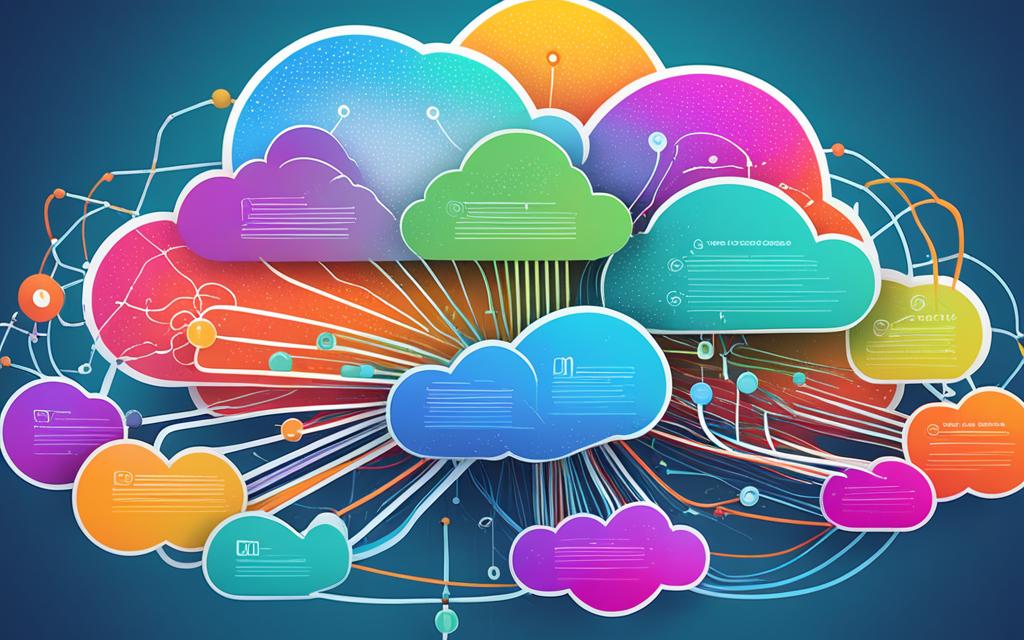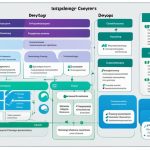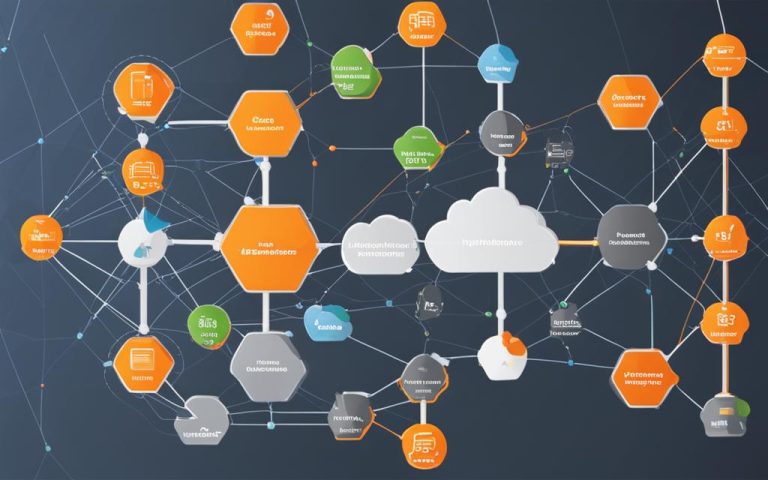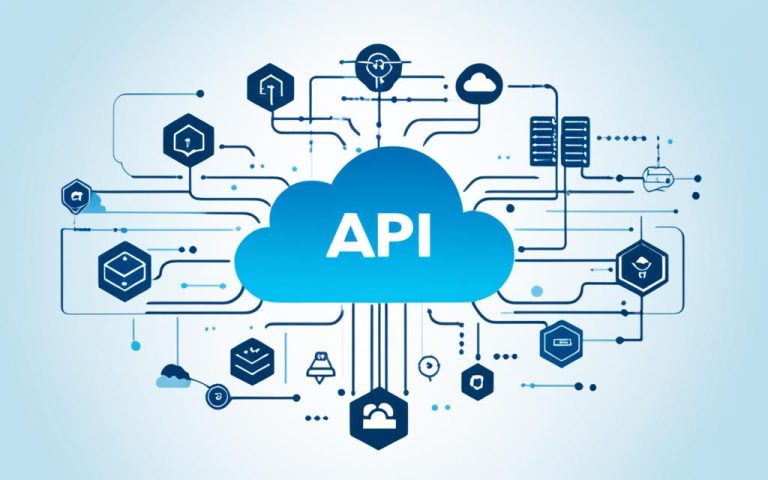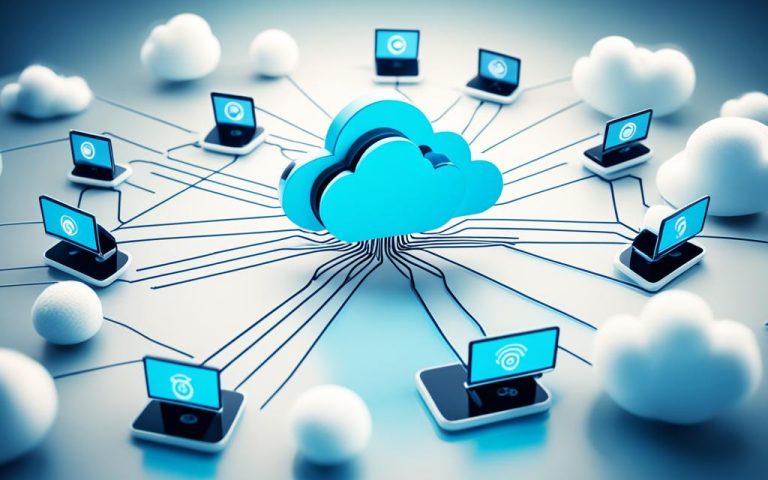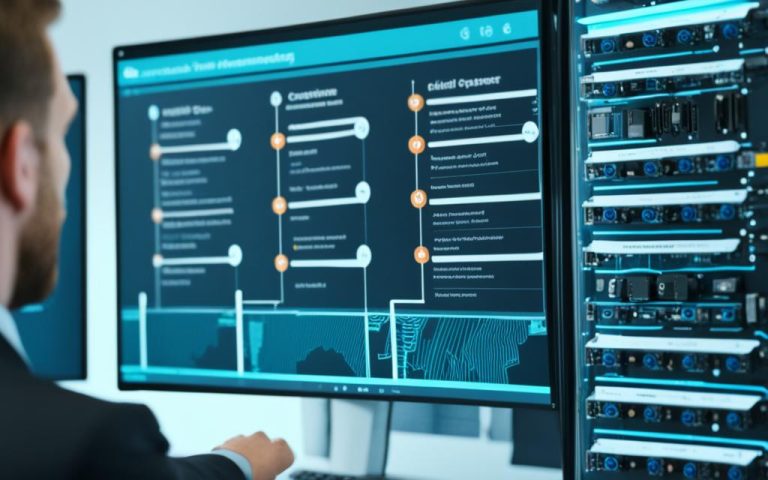Cloud Identity Management, access control, user authentication, IAM solutions, access management software, IAM framework, IAM software deployment, IAM strategy, IAM solution comparison.
Identity and access management (IAM) solutions play a crucial role in enhancing the security of cloud networks. By managing user identities and permissions, IAM ensures robust access control and user authentication. IAM solutions include access management software, which authenticates users and grants them the correct permissions for accessing resources.
An IAM framework consists of core components like databases for user identities and access privileges, tools for managing access privileges, and auditing systems for tracking login and access history. Organizations can deploy IAM software on-premises or in the cloud, depending on their specific needs.
Having an IAM solution is essential for organizations to protect their sensitive data and ensure compliance with industry regulations. When comparing IAM solutions, organizations should consider features like multi-factor authentication, passwordless authentication, privileged account management, role-based access control, and audit and compliance compatibility.
What Are Identity And Access Management Solutions?
IAM solutions are crucial for organizations to effectively manage digital identities and control access to resources. Digital identities contain valuable information about an individual’s role, level of access, and contact details. By implementing IAM solutions, organizations can ensure that the correct individuals are granted appropriate access to resources.
Access management is a vital component of IAM solutions, which involves granting access based on verified identities and specific permissions. It goes beyond authentication and focuses on evaluating user attributes based on policies to make informed access decisions.
IAM software plays a significant role in managing user attributes, while access management services evaluate these attributes to determine access permissions. With IAM solutions, organizations can effectively manage user identities, permissions, and access to various systems and applications.
IAM solutions ensure that organizations have granular control over user authentication, permissions, and access to resources. This enables organizations to maintain a secure environment and protect sensitive data from unauthorized access.
Components of IAM Solutions
IAM solutions consist of various components that work together to provide comprehensive identity and access management. These components include:
| Component | Description |
|---|---|
| Identity Repository | Stores and manages digital identities, including user attributes and permissions. |
| User Authentication | Verifies the identities of users through various authentication methods like passwords, multi-factor authentication (MFA), or biometrics. |
| Access Control | Evaluates user attributes and applies policies to determine access permissions. |
| Provisioning | Automates the process of creating, modifying, and revoking user accounts and their associated permissions. |
| Single Sign-On (SSO) | Enables users to access multiple systems and applications with a single set of credentials. |
| Audit and Reporting | Tracks user activities, generates audit logs, and provides reports for compliance and security monitoring. |
IAM solutions integrate these components to create a robust framework for managing digital identities and ensuring secure access to resources. This enables organizations to enforce access controls, streamline user administration, and maintain regulatory compliance.
How Identity and Access Management Works
An IAM system plays a vital role in securely managing user access to resources. It identifies, authenticates, and authorizes individuals, ensuring that only authorized users can access the desired resources. This process involves several components and standardized workflows within an IAM framework.
The core properties of an IAM system include:
- The ability to identify individuals: IAM systems maintain a database of user identities, storing information such as usernames, email addresses, and employee or customer IDs.
- Authentication of user identities: IAM solutions employ various authentication methods, such as passwords, biometrics, or multi-factor authentication (MFA), to verify the identities of users.
- Authorization to access resources: Once the user’s identity is authenticated, IAM systems determine the user’s access privileges and grant authorization to access the desired resources based on predefined policies and permissions.
IAM workflows automate and streamline processes across multiple user accounts. By standardizing these workflows, organizations can achieve consistent and efficient access management. Common IAM workflows involve user onboarding and offboarding, access approval requests, password resets, and account provisioning.
Within an IAM framework, several components work together to ensure secure access management:
- A database for storing user identities and access privileges: This component serves as a repository for user data, including attributes such as usernames, roles, and permissions.
- Tools for managing access privileges: IAM systems provide administrative interfaces for managing user roles, permissions, and group memberships.
- Systems for auditing login and access history: These components track and log user activities, providing a comprehensive audit trail that can help identify and investigate potential security incidents.
Overall, IAM functions fall under the purview of IT departments responsible for cybersecurity and data management within organizations. By implementing an IAM system, organizations can establish robust access controls, ensure compliance with regulations, and mitigate the risk of unauthorized access to sensitive resources.
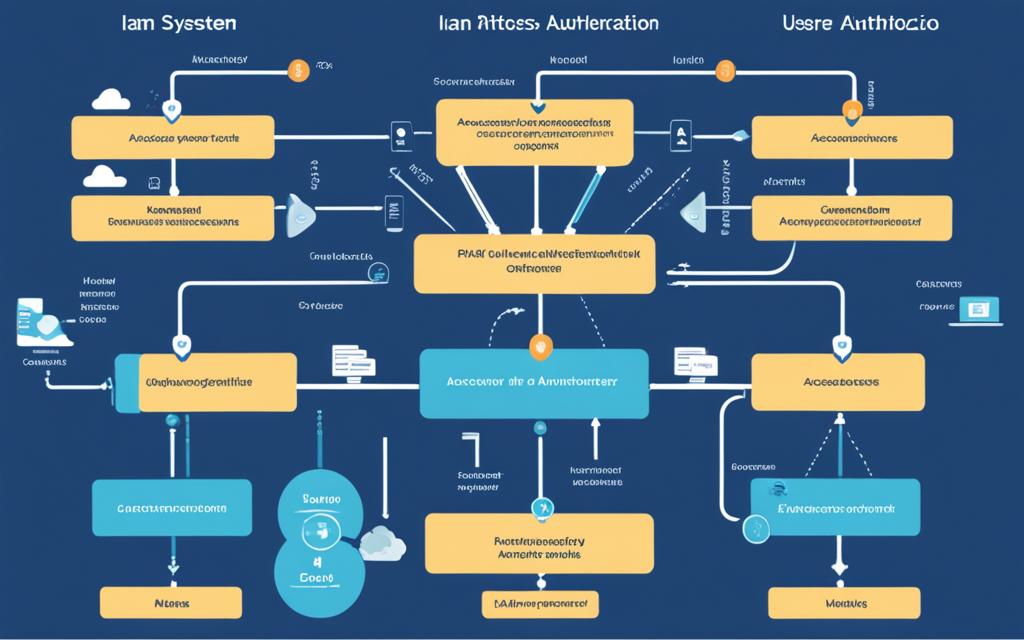
| Benefits of IAM System | Description |
|---|---|
| Enhanced Security | An IAM system strengthens security by controlling user access to resources and preventing unauthorized access. |
| Streamlined Workflows | By standardizing processes, an IAM system simplifies access management, improving operational efficiency. |
| Regulatory Compliance | IAM solutions help organizations meet industry regulations and compliance requirements by providing audit trails and access control mechanisms. |
| Improved User Experience | With a single sign-on (SSO), users can conveniently access multiple resources with a single set of credentials. |
How Is IAM Software Deployed?
IAM software can be deployed in two ways: on-premises and in the cloud. Each approach offers its own advantages and considerations for organizations.
On-Premises Deployment
On-premises deployment involves installing the IAM software on the organization’s own computers or servers. This approach provides maximum control over the IAM system and data, as everything is managed within the organization’s infrastructure.
By deploying IAM software on-premises, organizations have full control over security measures, customization options, and integration with existing systems. It allows for strict adherence to internal policies and compliance requirements. However, on-premises deployment may require additional installation efforts and ongoing maintenance to ensure optimal performance and security.
Cloud-Based Approach
A cloud-based approach to IAM deployment involves utilizing a service provider’s infrastructure for hosting and managing the IAM software. This eliminates the need for organizations to install and maintain the software on their own systems.
Cloud-based IAM solutions offer benefits such as easy scalability, rapid deployment, and reduced maintenance overhead. Organizations can leverage the provider’s infrastructure and resources for seamless IAM operations. Additionally, cloud-based deployment allows for greater flexibility and accessibility, making it well-suited for organizations with distributed teams or remote workers.
With cloud-based IAM solutions, organizations can quickly adapt to changing needs without the complexity of additional installations or infrastructure setup. They can also take advantage of automatic updates and patches provided by the service provider, ensuring the IAM software is always up to date with the latest security features.
Choosing the Right Deployment Method
When deciding on the deployment method for IAM software, organizations should consider their specific needs, resources, and security requirements. The table below summarizes the key considerations for on-premises and cloud-based deployment:
| Deployment Method | Advantages | Considerations |
|---|---|---|
| On-Premises |
|
|
| Cloud-Based |
|
|
Organizations should carefully evaluate their requirements and resources to determine which deployment method aligns best with their IAM strategy. Whether they choose on-premises or cloud-based, implementing an effective IAM solution is crucial for maintaining robust identity and access management across their networks.
Why Do You Need An IAM Solution?
In today’s business landscape, having an IAM solution is essential, especially with the rise of hybrid workplaces and an increasing number of remote employees. Data breaches, often caused by compromised identities, pose a significant threat to organizations. To mitigate this risk, IAM provides comprehensive security by supporting secure remote access to restricted data and tools.
IAM solutions play a critical role in enforcing personalized and individual security measures for remote workers. By implementing an IAM strategy, organizations can ensure that all users logging into restricted areas have robust identity security. This helps prevent unauthorized access and protects sensitive data.
Whether a company is small or large, IAM is crucial for safeguarding valuable information and maintaining confidentiality. With IAM, organizations can protect against identity-related data breaches and establish restricted access controls that enhance overall security.
To summarize, the benefits of implementing an IAM solution include:
- Protecting sensitive data and preventing unauthorized access
- Supporting secure remote access for hybrid workplaces and remote employees
- Enforcing comprehensive security measures
| BENEFITS OF IAM SOLUTIONS |
|---|
| 1. Enhanced data security and protection |
| 2. Secure remote access for hybrid workplaces and remote employees |
| 3. Robust identity security and prevention of data breaches |
By leveraging IAM solutions, organizations can establish a secure and efficient framework to protect valuable data, minimize the risk of data breaches, and control access to sensitive resources.
Conclusion
Implementing an Identity and Access Management (IAM) solution brings numerous benefits to organizations. IAM simplifies access management, ensuring that only authorized individuals have access to resources. This enhances end-user experiences by providing a seamless and efficient login process, improving productivity. IAM also improves password safety by implementing robust authentication methods like multi-factor authentication (MFA) and passwordless authentication.
Furthermore, IAM strengthens data security by centralizing user identities and permissions, reducing the risk of data breaches and unauthorized access. It also ensures regulatory compliance by enforcing strong access controls and auditing capabilities, enabling organizations to meet industry regulations and standards.
IAM solutions streamline user onboarding and offboarding processes, making it easier to manage user accounts and access privileges. This simplifies the management of employee transitions, ensuring that access is granted or revoked promptly. Additionally, IAM offers the convenience of single sign-on (SSO), allowing users to access multiple applications and systems with a single set of credentials, further enhancing their experience.
Lastly, IAM provides robust audit and reporting capabilities. Organizations can monitor and track user activities, generate compliance reports, and gain valuable insights into access patterns and potential security threats. With IAM, organizations can optimize security, productivity, and operational efficiency within their cloud networks, safeguarding their data and empowering their workforce.
FAQ
What are IAM solutions and why are they important?
IAM solutions are crucial for enhancing cloud network security by managing user identities and permissions. They ensure robust access control and user authentication, protecting sensitive data and ensuring compliance with industry regulations.
How do IAM solutions work?
IAM solutions identify, authenticate, and authorize users to access resources. They manage user attributes and evaluate them based on policies to make access decisions. IAM frameworks consist of components like user databases, access privilege tools, and auditing systems.
How is IAM software deployed?
IAM software can be deployed on-premises by installing it on the organization’s own computers, or in the cloud without the need for additional installation. Organizations should choose the deployment method that best suits their needs and resources.
Why do organizations need an IAM solution?
IAM solutions are essential in today’s business landscape to protect sensitive data and prevent unauthorized access. With hybrid workplaces and an increasing number of remote employees, IAM supports secure remote access and ensures comprehensive security.
What benefits does implementing an IAM solution offer?
Implementing an IAM solution simplifies access management, enhances end-user experiences, improves password safety, strengthens data security, ensures regulatory compliance, streamlines user onboarding and offboarding, provides single sign-on convenience, and offers robust audit and reporting capabilities.

